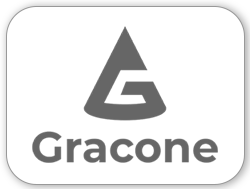
There are many B2B marketing methods available: tradeshows, emails, white papers, newsletters, industry magazine ads, sponsorships, industry directory listings, social media, SEO, search engine ads, and more. If you are reading this, then you probably use some or all of these. Each has its own advantages and disadvantages.
PDH marketing is not a substitute for all the marketing tools you already use. Rather, it can be a powerful addition to your marketing toolbox. There are several characteristics of PDH marketing that distinguish it from other marketing approaches.
Permission Marketing, Not Interruption Marketing
PDH marketing is a form of content marketing. The Content Marketing Institute defines content marketing as a strategic marketing approach focused on creating and distributing valuable, relevant, and consistent content to attract and retain a clearly-defined audience—and, ultimately, to drive profitable customer action. When you host an educational webinar or a lunchtime presentation that awards PDH credits, you are sharing content that is valuable and relevant.
One key difference between content marketing and traditional marketing is this: content marketing is a permission marketing technique while traditional marketing is an interruptive one. Traditional marketing reaches people while they are doing something else. For example, an engineer who sees your ad in a trade publication is interrupted from what he was doing—namely, reading the articles in the magazine.
Content marketing is welcomed, whereas interruption marketing is often seen as being obtrusive.
Content marketing is considered permission marketing because the person who consumes the content chooses to do so. An engineer who enrolls in your webinar or attends your lunchtime presentation sets aside an hour of his time to spend with you. In other words, he gives you permission to present content to him.
Content marketing is welcomed by the audience. Interruption marketing is quite often obtrusive and is generally regarded in a less favorable light. Don’t get me wrong, interruption marketing can be very effective. Companies wouldn’t spend billions of dollars each year to advertise on TV, the radio, the internet, in magazines, and on billboards if they weren’t achieving an acceptable ROI. However, people have become so flooded with ads that they tend to tune them out—making it harder for marketers to catch the attention of the audience.
With PDH marketing, that’s not an issue. With a webinar or lunch & learn, you will command the full attention of a targeted audience of engineers for a full hour. These are people who choose to be there, not people who are interrupted from what they really want to be doing.
Costs
I don’t intend to provide a quantitative comparison of the average cost-per-lead among various B2B marketing options. There are just too many variables at play to nail down a value or even a reasonable range of values.
Content marketing is welcomed, whereas interruption marketing is often seen as being obtrusive.
But, I will provide some qualitative comparisons. In general, content marketing, including PDH marketing, is a cost-effective method for generating leads. According to a report by Demand Metric, content marketing efforts cost 62% less than traditional marketing efforts, and they generate 3 times as many leads.
The three main vehicles for delivering content via PDH Marketing are webinars, lunchtime presentations, and online courses.
The prices charged by webinar platforms, such as WebEx, have gone down considerably in the last few years. Considering the fact that you can reach 50 to 100 engineers or more at a time, webinars provide a very attractive cost per lead compared to tradeshows, search engine ads, trade publication ads, and industry directory listings, especially when you consider the level of engagement in a 60-minute webinar. There is, however, one caveat: the cost to host a webinar or a lunchtime presentation or an online course is only part of the equation. You need to find the engineers that you will invite to your PDH event. For more information on this topic, see finding engineers to attend your event.
Lunch & learns at clients’ offices typically incur more costs than webinars. The protocol is to buy a boxed sandwich lunch for all the engineers who attend the presentation. There are also travel costs involved, which can vary greatly. If you have a presenter located in the same city as the client engineering firm, then travel may be limited to a short drive across town. For longer trips requiring air travel between states or even across the country, the costs are obviously higher.
Industrial manufacturers and suppliers have used lunch & learns for decades with great success.
Although they are more expensive to host, lunchtime presentations provide better audience engagement than webinars. Additionally, the environment at a lunch & learn is conducive for side discussions before and after the presentation where the seeds of many fruitful business relationships have been planted over the years. Industrial manufacturers and suppliers have used lunch & learns with great success going back to at least the 1980s.
Level of Engagement
I’ve touched on this subject before, but it’s worth diving a bit deeper. A PDH marketing event must be at least 50 to 60 minutes long because the minimum credit you can award for an educational activity is 1 PDH. None of the traditional marketing tools I’ve mentioned even come close to 60 minutes of engagement. I suppose you could write a long white paper or a guide that takes 60 minutes to read, but who’s going to read the whole thing, especially if they’re not going to get PDH credit at the end?
You’d be hard-pressed to find a traditional marketing tool that provides 60 minutes of access to a large group of engineers.
You could have a side conversation with a trade show attendee for an hour. But, how many companies have enough people staffing a trade show booth to allow employees to slip away for a one-hour conversation? And even if you could slip away, you’re only engaging one potential customer at a time. Hold a webinar or a lunch and learn and you can reach dozens of engineers at the same time and have their attention for a full hour.
Contact/Demographic Info
When engineers attend a PDH marketing event, they expect that they will have to give you their contact information and some demographic data. The engineer is happy to trade his information in exchange for free PDH credit (and perhaps a free meal too if it’s a lunch & learn). This has been going on for so many years that it’s now considered standard operating procedure. Engineers have become conditioned to the fact that handing over information is the “price of admission” to attend a free PDH event.
PDH marketing events are not unique in this regard. Trade publications require the reader to complete and mail in an information card to receive sales literature from advertisers. If you want to download a white paper on a website, oftentimes you must type your information into form fields on the site before you can download the document.
The benefit of getting contact info and extensive demographic data from PDH event attendees is enormous.
What sets apart PDH marketing is the amount of information that engineers are willing to hand over in exchange for a seat at the event. That’s because these events have a high perceived value in the eyes of the engineers. Yes, the educational value of attending a webinar is important to engineers, but the end game is getting the free PDH credit.
The benefit of getting contact info and extensive demographic data from event attendees is enormous. It allows you to focus your sales and marketing efforts on the most promising leads and avoid wasting time chasing after engineers who are not good prospects.
Tracking ROI
Long sales cycles tend to accompany big industrial B2B purchases. Oftentimes, lots of money and lots of people are involved in the sales process. It is very easy to lose track of where the original lead came from. Did the lead come from a golf tournament sponsorship or a trade publication ad? Perhaps the lead was an engineer who downloaded a whitepaper from your website.
A big part of the problem with tracking ROI for an industrial purchase is the lack of communication between the marketing and sales teams.
A big part of the problem with tracking ROI for an industrial purchase is the lack of communication between the marketing and sales teams. Marketing might know which efforts drive the most traffic and leads, but they don’t know which leads convert to sales. The sales team knows which leads convert, but they don’t know where the leads came from. In short, neither team knows what marketing activities lead to a sale.
The problem is that data at the top of the funnel is locked away in marketing tools such as Google Analytics and the bottom of the funnel data is confined to CRM systems which are typically handled by the sales team.
Tracking webinar and lunch & learn leads from inception to conversion can be accomplished without a lot of effort. You’ll need to collect and store your attendees’ information electronically if you want to efficiently create their certificates of completion. The electronic format can be as simple as a spreadsheet. This information can then be imported into the sales team’s CRM system.
Engineers’ information can be imported into a CRM system electronically, allowing you to efficiently determine the ROI of your PDH marketing program.
OK, so you’re probably thinking “Well, the marketing team could do the same thing with leads that come from the other marketing efforts, but they don’t.” That’s true, but there are some key differences with a PDH marketing event.
First of all, the person making the presentation at a PDH marketing event is almost always part of the sales team—at least that’s been my experience. You can bet that the salesperson or sales engineer is going to take a look at the attendees’ demographic information and make sure the most promising leads get input into his CRM system.
A PDH marketing event is similar to a tradeshow in some regards. A salesperson is going to make a point of following up with a promising lead he meets at a tradeshow who has a big project coming up. He’s not going to lose track of that engineer during the sales cycle. He’s very likely to remember that conversation from the tradeshow when a purchase order is finally issued. The same is true with a side conversation at a lunch & learn event.
But, what about all the short, unremarkable conversations that happen at the tradeshow booth? And the business cards dropped in a fishbowl for a prize drawing? Those need to be manually typed into a CRM system, whereas the attendees’ information from a PDH marketing event, such as a webinar, will be in electronic format and can be readily imported into a CRM system.
It seems appropriate to reemphasize here a previous point of discussion. You determine what demographic information you need to qualify leads and then require webinar attendees to provide that information as the “price of admission.” That’s not the case with people who visit your tradeshow booth, which can result in wasted effort chasing unqualified leads.
What’s even worse is that some of the most qualified leads gathered at a tradeshow can be lost because the sheer volume of names necessitates an impersonal, mass-market follow-up strategy. With a PDH webinar or lunch & learn, you have the same issue to deal with: a large number of names. But, the demographic data you collect along with the names allows you to quickly filter down to a manageable list of the most promising leads.


